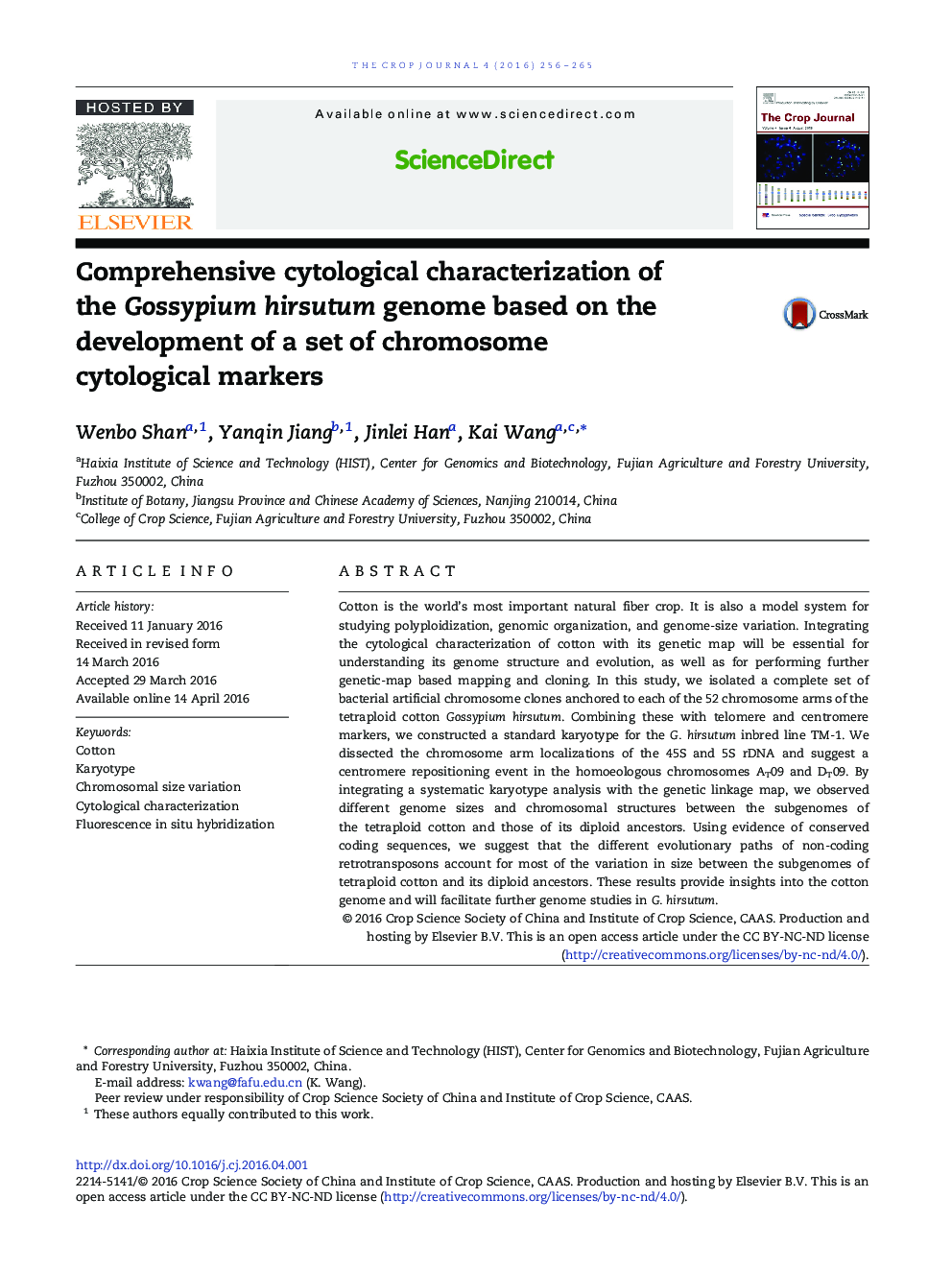| Article ID | Journal | Published Year | Pages | File Type |
|---|---|---|---|---|
| 2079400 | The Crop Journal | 2016 | 10 Pages |
Cotton is the world's most important natural fiber crop. It is also a model system for studying polyploidization, genomic organization, and genome-size variation. Integrating the cytological characterization of cotton with its genetic map will be essential for understanding its genome structure and evolution, as well as for performing further genetic-map based mapping and cloning. In this study, we isolated a complete set of bacterial artificial chromosome clones anchored to each of the 52 chromosome arms of the tetraploid cotton Gossypium hirsutum. Combining these with telomere and centromere markers, we constructed a standard karyotype for the G. hirsutum inbred line TM-1. We dissected the chromosome arm localizations of the 45S and 5S rDNA and suggest a centromere repositioning event in the homoeologous chromosomes AT09 and DT09. By integrating a systematic karyotype analysis with the genetic linkage map, we observed different genome sizes and chromosomal structures between the subgenomes of the tetraploid cotton and those of its diploid ancestors. Using evidence of conserved coding sequences, we suggest that the different evolutionary paths of non-coding retrotransposons account for most of the variation in size between the subgenomes of tetraploid cotton and its diploid ancestors. These results provide insights into the cotton genome and will facilitate further genome studies in G. hirsutum.
